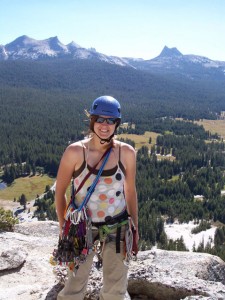CSUN Prof Receives $1.3 Million NASA Grant to Search for Ties Between Earth and Possible Extraterrestrial Life
As the National Aeronautics Space Administration (NASA) uses Mars rovers to search for extraterrestrial life on the red planet, California State University, Northridge biology professor Rachel Mackelprang aids the search for signs of life in the frozen soil on Earth.
Mackelprang and her collaborators at the United States Geological Survey were awarded a three-year $1.3 million NASA grant in the summer to study the connection between frozen soil and the possibility of life on frozen galactic planets and comets.
“[NASA] is interested in how life survives in extreme conditions on Earth,” she said. “[This is] the type of life that may survive on extraterrestrial bodies.”
By looking at permafrost, which is ground that has been frozen for at least 5,000 years, Mackelprang will analyze how organisms on a frozen terrain can survive, which is similar to what NASA is studying on frozen planets and comets.
“It relates to extraterrestrial bodies because Mars and a large number of planets, moons and asteroids in our solar system are frozen,” Mackelprang explained. “So if there is life on these other bodies, chances are it occurs in a frozen environment.”
The team will venture out to Alaska — where some of the ground has been frozen for more than 135,000 years — to retrieve their permafrost soil cores beginning in Spring 2016. Next, the team will separate live and dead microbial cells and then sequence the DNA of those thousands of cells at her lab in CSUN.
“We have to put the [DNA sequence] back together computationally,” she said. “It would be a little bit like taking a bunch of copies of the New York Times, [where] each story would be a species of organism, shredding it all up completely, so you have a pile of strips of paper with sentences on it [like DNA components], and piece the Times back together.”
Mackelprang said she hopes to discover the ways in which organisms on Earth survive in frozen conditions for long periods of time.
“We can compare samples from increasingly ancient permafrost and see what types of strategies the surviving organisms are using in order to survive longer and longer times in a frozen environment,” she said.
Mackelprang said her research in permafrost originally began in 2009, when she looked into climate change’s effects on it.
“Permafrost is relevant to climate change, since there are enormous amounts of carbon stored in it,” she said. “It is now thawing, which allows microorganisms to degrade the carbon and ‘breathe’ it into the atmosphere in the form of carbon dioxide. This process is contributing to global warming.”
With the new grant, Mackelprang said she is looking forward to conducting her research in a different perspective and including CSUN graduate and undergraduate students into it.
“I am honored to be funded by an agency like NASA,” she said. “A lot of research will be conducted here, and students will get to be a part of it.”


 experience
experience